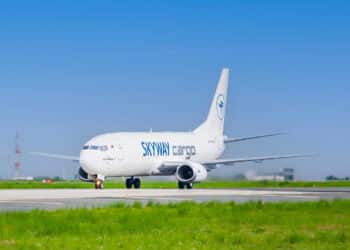e-AWB penetration rate dips as shippers call for more digitization

While the newly formed Shippers’ Advisory Committee, created last year by the International Air Cargo Association (TIACA), today released a position paper calling for greater transparency and digitization of the global supply chain, the International Air Transport Association (IATA) recently reported that the penetration rate for its electronic air waybill (e-AWB) initiative dipped from 49.2 percent in December 2016 to 48.5 percent in January 2017.
Along with the 0.7 percentage-point decline came an even steeper monthly plunge in global e-AWB volume, dropping from 687,774 tonnes in December to 639,582 tonnes – a 7 percent month-to-month slide. This drop occurred during the expected lull in cargo shipments following peak season activity, so it came as no surprise. However, the decline came after an unbroken string of penetration and tonnage increases since last spring.
Meanwhile, the position paper released by TIACA’s Shippers’ Advisory Committee (SAC) listed several short-term goals to help meet the needs of today’s shippers, including the search for a logistics data backbone solution. SAC is also seeking innovative technology, such as smart labels and intelligent boxes, and calling for “new ways to communicate data and providing options that reduce the need for physical consolidations and allow for virtual ones.”
The SAC paper pointed out that today’s air cargo supply chain requires 21 documents to be sent i40 times in 20 separate steps. “It is complicated, it is expensive, it is outdated, it is slow,” the paper continued. “A decentralized, open platform with a shared collaborative environment would enable seamless integration and real time visibility over freight. We would be eliminating data re-entry and errors, instead having first-time-right data, updated by real time events and maintained to reflect one version of the truth.”
“TIACA fully endorses this position paper and we are thrilled that we now finally have the shipper’s voice and engagement to make much-needed changes in the air cargo supply chain,” said Sebastiaan Scholte, CEO of Jan de Rijk Logistics, and vice chairman of TIACA. The paper is also supported by the Global Shippers Forum (GSF) and the European Shippers’ Council.
“This is a high-level document which will start an important dialogue for the industry,” said Lars Droog, head of supply chain and general affairs for Tosoh Corp., and chairman of SAC. “Each shipper faces different challenges and has different needs and, in the coming months, we will explore these as part of the conversation.”
The SAC group was formed to bring the voice of the shipper to the discussion about how to improve supply chain processes and to spark debate on innovation in the industry. Besides Droog as the chairman, the other six SAC members include:
- Bernhard Baertschi, head of export for Bioforce AG
- Yoram Eshel, senior director, and head of global transportation and logistics at Teva Pharmaceutical Industries
- Robert Mellin, engagement lead for logistics at Ericsson Industry and Society
- Pascal Meyer, head of transportation and customs for Chanel Perfums Beauté
- Tom Erling Mikkelsen, head of airfreight at Marine Harvest Terminal
- Alex Nieuwpoort, of Sandvik Machining Solutions
The SAC group is scheduled to discuss the next steps necessary to implement their goals at TIACA’s Executive Summit, which takes place Oct. 18-20 in Miami. TIACA’s SAC position paper can be viewed here on the TIACA website, under “latest news.”
IATA also said its current goal for e-AWB penetration by the end of 2017 is now 62 percent. by the end of the year. To encourage a more rapid e-AWB adoption rate by airlines and forwarders, IATA is now offering an e-AWB implementation playbook , which suggests various steps to help implement a successful e-AWB program.




